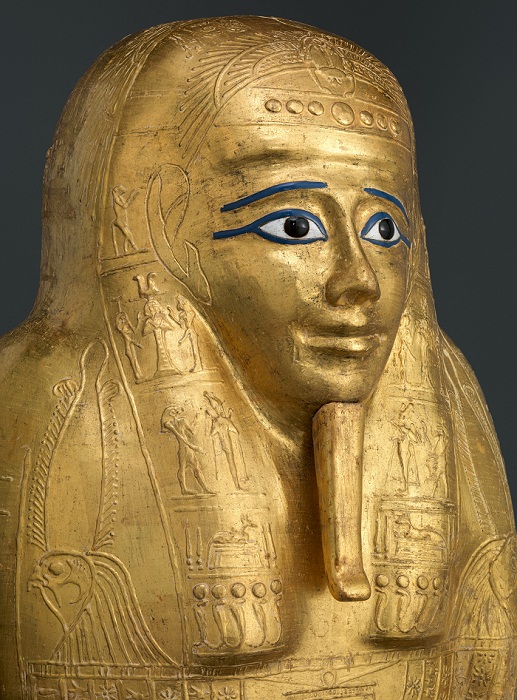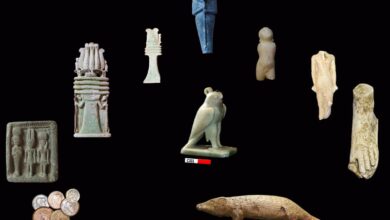
Egypt’s Antiquities Ministry on Tuesday revealed details on the recovery of the golden sarcophagus of the priest Nedjemankh from the US, which had been stolen in the aftermath of the January 25 revolution.
The coffin is now being displayed in the temporary exhibition hall of the National Museum of Egyptian Civilization in Fustat.
Shaaban Abdel Jawad, the director of the ministry’s Recovered Antiquities Department, stated on Tuesday that the coffin had not been lost from the ministry’s stores or museums, but obtained as a result of illegal smuggling.
He said that the golden coffin was stolen from Egypt in 2011 in the wake of the January 25 revolution, and the Metropolitan Museum in New York obtained the coffin from an antiquities dealer in Paris in July 2017 for about four million US dollars.
Jawad added that legal procedures are currently being carried out by the Public Prosecutor to reveal the details of the coffin’s theft and smuggling.
He explained that the sarcophagus is an important addition to Egyptian museums, and dates back to the end of the Ptolemaic period. It is made of wood covered with gold in the form of a mummy, at a length of two meters, dating back to the end of the Ptolemaic Dynasty (150-50 BC), he said.
Jawad further explained that the sarcophagus belonged to a senior priest for the deity Hershef, in the city of Heracleopolis, currently Ehnasia City in Beni Suef. He pointed out that the coffin no longer contains the mummy of the priest.
He pointed out that the efforts of the Egyptian Ministries of Antiquities and Foreign Affairs succeeded in proving Egypt’s right to recover the sarcophagus bought by the Metropolitan Museum from an antiquities dealer who was holding an exit permit for the coffin issued from Egypt in 1971.
The New York City Attorney’s Office has investigated the incident for over 20 months.
The Egyptian ministries of Antiquities and Foreign Affairs provided all evidence that proves beyond any doubt that an alleged 1971 exit permit for the piece was forged, and no permit had ever issued from Egypt regarding the coffin.
Before 1983, the law allowed the issuance of exit permits for some pieces outside Egypt.
The US investigation concluded that Egypt was entitled to the restoration of the coffin, that the export permit was fake, and that the Metropolitan Museum had been deceived when purchased it.
In February, the Metropolitan Museum sent a letter to the Antiquities Ministry confirming the museum’s apology to the ministry, the government and the Egyptian people for this incident, and that the museum had taken all measures to return the piece to Egypt.
Jawad noted that the recovery of the coffin comes as part of bilateral cooperation with the US and a memorandum of understanding between the foreign ministers of the two countries in November 2016, on the protection of Egyptian antiquities from trafficking.
On Wednesday, Egyptian Foreign Minister Sameh Shoukry took part in the ceremony to receive the coffin at the US Attorney’s Office in New York.
Edited translation from Al-Masry Al-Youm




